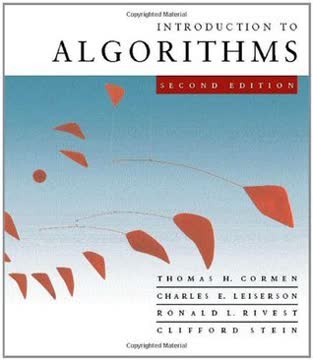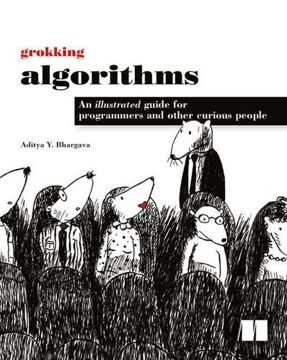Key Takeaways
1. The Internet: A Network of Networks Providing Services
The Internet is a computer network that interconnects billions of computing devices throughout the world.
Global Interconnection. The Internet is a vast, interconnected system linking billions of devices, from traditional computers to smartphones, IoT devices, and servers. It's not just about hardware; it's an infrastructure that provides services to distributed applications.
Service-Oriented Architecture. The Internet offers a socket interface, a set of rules that programs must follow to request data delivery to other programs. This interface allows developers to create distributed applications without needing to understand the underlying network complexities.
Protocols and Standards. The Internet relies on protocols like TCP/IP to govern data transmission. Standards, developed by organizations like the IETF, ensure interoperability, allowing diverse systems to communicate effectively.
2. Network Edge: End Systems, Access Networks, and Physical Media
In Internet jargon, all of these devices are called hosts or end systems.
End Systems and Hosts. Devices connected to the Internet, known as end systems or hosts, include computers, smartphones, and IoT devices. These hosts run applications and are categorized as clients (requesting services) or servers (providing services).
Access Networks. End systems connect to the Internet through access networks, such as DSL, cable, FTTH, Ethernet, WiFi, and cellular. These networks use various physical media, including copper wire, coaxial cable, optical fiber, and radio spectrum.
Physical Media. Physical media, both guided (e.g., fiber-optic cables) and unguided (e.g., radio waves), transmit data between devices. The choice of medium affects transmission rates, costs, and suitability for different environments.
3. Network Core: Packet Switching, Circuit Switching, and Interconnections
A packet switch takes a packet arriving on one of its incoming communication links and forwards that packet on one of its outgoing communication links.
Packet Switching. Data is divided into packets, which are forwarded through the network by packet switches (routers and link-layer switches). This approach allows for efficient use of network resources and flexible routing.
Circuit Switching. In contrast, circuit switching establishes a dedicated connection between end systems for the duration of a communication session. While providing guaranteed bandwidth, it can be less efficient for bursty traffic.
Network of Networks. The Internet is a network of interconnected ISPs, ranging from local access providers to national and international tier-1 providers. These ISPs peer with each other at Internet Exchange Points (IXPs) to exchange traffic.
4. Delay, Loss, and Throughput: Understanding Network Performance
A packet starts in a host (the source), passes through a series of routers, and ends its journey in another host (the destination).
Sources of Delay. Packets experience various delays as they traverse the network, including processing delay, queuing delay, transmission delay, and propagation delay. Understanding these delays is crucial for optimizing network performance.
Queuing and Loss. Queuing delay occurs when packets wait in output buffers at routers. If buffers overflow, packet loss occurs, impacting application performance. Traffic intensity (La/R) is a key factor in determining queuing delay and packet loss.
End-to-End Throughput. Throughput, the rate at which data is transferred between end systems, is limited by the bottleneck link along the path. Factors such as link capacity and intervening traffic affect end-to-end throughput.
5. Protocol Layers: Structuring Network Communication
A protocol defines the format and the order of messages exchanged between two or more communicating entities, as well as the actions taken on the transmission and/or receipt of a message or other event.
Layered Architecture. Network protocols are organized into layers, each providing specific services to the layer above. The Internet protocol stack consists of five layers: physical, link, network, transport, and application.
Internet Protocol Stack. Each layer has specific responsibilities:
- Application: Network applications and their protocols (e.g., HTTP, SMTP)
- Transport: Transports application-layer messages (TCP, UDP)
- Network: Moves network-layer packets (datagrams) from one host to another (IP)
- Link: Moves frames from one network element to an adjacent network element (Ethernet, WiFi)
- Physical: Moves individual bits within the frame from one node to the next
Encapsulation. As data moves down the protocol stack, each layer adds header information, encapsulating the data from the layer above. This process ensures that each layer has the necessary information to perform its functions.
6. Security Threats: Defending Against Network Attacks
All activity in the Internet that involves two or more communicating remote entities is governed by a protocol.
Malware. Malicious software, including viruses and worms, can infect devices via the Internet, causing damage, stealing data, or enrolling devices in botnets.
Denial-of-Service (DoS) Attacks. DoS attacks aim to render networks or hosts unusable by legitimate users. These attacks include vulnerability attacks, bandwidth flooding, and connection flooding. Distributed DoS (DDoS) attacks, leveraging botnets, are particularly challenging to defend against.
Packet Sniffing. Attackers can use packet sniffers to capture sensitive information transmitted over networks, especially wireless networks. Encryption is a key defense against packet sniffing.
7. A Brief History: From ARPANET to Today's Internet
Today’s Internet is arguably the largest engineered system ever created by mankind.
Packet Switching Origins. The Internet's roots trace back to the early 1960s and the development of packet switching as an alternative to circuit switching. Key figures include Leonard Kleinrock, Paul Baran, and Donald Davies.
ARPANET and TCP/IP. The ARPANET, the first packet-switched network, was a precursor to the Internet. The development of TCP/IP in the 1970s provided a foundation for interconnecting networks.
The Internet Explosion. The 1980s and 1990s saw the proliferation of networks and the commercialization of the Internet. The emergence of the World Wide Web in the 1990s brought the Internet to the masses.
Last updated:
FAQ
What is "Computer Networking: A Top-Down Approach" by James F. Kurose about?
- Comprehensive networking introduction: The book offers a modern, in-depth overview of computer networking, focusing on the Internet’s architecture, protocols, and applications.
- Top-down pedagogical method: It uniquely starts at the application layer, making networking concepts accessible by relating them to real-world applications before moving down to lower layers.
- Blend of theory and practice: Both conceptual explanations and practical programming examples are provided, including socket programming in Python.
- Coverage of current and future trends: The text addresses recent advances like software-defined networking (SDN), network security, and emerging Internet technologies.
Why should I read "Computer Networking: A Top-Down Approach" by Kurose and Ross?
- Accessible and updated content: The book is regularly revised to reflect the latest networking developments, including new protocols and technologies.
- Balanced theory and hands-on learning: It combines foundational principles with practical assignments, Wireshark labs, and real-world case studies such as Netflix and YouTube.
- Strong pedagogical support: Interactive materials, video presentations, and a companion website enhance learning for both students and practitioners.
- Encourages innovation and critical thinking: The authors inspire readers to imagine and contribute to the evolving Internet landscape.
What are the key takeaways from "Computer Networking: A Top-Down Approach" by Kurose and Ross?
- Layered network understanding: Readers gain a clear grasp of the five-layer Internet protocol stack and how each layer supports the others.
- Application-driven learning: Early focus on network applications helps students see the relevance and practical use of networking concepts.
- Emphasis on Internet principles: The book highlights enduring networking principles that remain relevant beyond specific protocols.
- Preparation for real-world challenges: Coverage of security, scalability, and modern Internet applications prepares readers for current and future networking environments.
What is the top-down approach to teaching networking in "Computer Networking: A Top-Down Approach"?
- Starts with applications: The book begins with familiar network applications like the Web, email, and video streaming to motivate and engage students.
- Layered progression: After applications, it systematically explores the transport, network, link, and physical layers, showing how each supports the one above.
- Motivational and practical: Early exposure to application-layer protocols and socket programming demonstrates the real-world impact of networking.
- Reinforces layered architecture: This approach helps learners understand the dependencies and services provided by each layer.
What are the key concepts and layers of the Internet protocol stack explained in "Computer Networking: A Top-Down Approach"?
- Five-layer model: The book covers the application, transport, network, link, and physical layers, detailing their roles and interactions.
- Application layer focus: Protocols like HTTP, SMTP, DNS, and video streaming are explained in depth.
- Transport layer details: TCP and UDP are covered, including reliable data transfer, flow control, and congestion control.
- Network, link, and physical layers: Topics include IP addressing, routing, Ethernet, WiFi, error detection, and physical transmission media.
How does "Computer Networking: A Top-Down Approach" by Kurose and Ross explain network application architectures?
- Client-server architecture: Describes always-on servers with fixed IPs serving multiple clients, as seen in the Web, FTP, and email.
- Peer-to-peer (P2P) architecture: Explains how peers communicate directly, sharing resources and workload, exemplified by BitTorrent and Skype.
- Hybrid models: Some applications combine client-server and P2P elements, such as instant messaging with server-based user tracking and direct messaging.
- Scalability and challenges: P2P architectures offer self-scalability but face security, performance, and reliability issues due to decentralization.
How does "Computer Networking: A Top-Down Approach" by Kurose and Ross describe the HTTP protocol and its role in the Web?
- Core Web protocol: HTTP defines how browsers and servers exchange messages to retrieve web pages and objects.
- Stateless and connection models: The book explains HTTP’s stateless nature, non-persistent vs. persistent connections, and HTTP/2 enhancements.
- Message structure: Details HTTP request and response formats, including methods (GET, POST), headers, status codes, and entity bodies.
- Advanced features: Covers cookies for state management, web caching for efficiency, and conditional GET requests for cache validation.
What transport-layer services and protocols (TCP/UDP) are covered in "Computer Networking: A Top-Down Approach"?
- Service dimensions: The book discusses reliable data transfer, throughput, timing, and security as key transport-layer services.
- TCP: Provides connection-oriented, reliable delivery with congestion control, used by applications like HTTP and email.
- UDP: Offers connectionless, unreliable delivery with minimal overhead, suitable for timing-sensitive applications like streaming and telephony.
- Security enhancements: Explains how TCP can be paired with SSL for encryption, integrity, and authentication.
How does "Computer Networking: A Top-Down Approach" by Kurose and Ross explain the Domain Name System (DNS) and its importance?
- Distributed directory service: DNS translates human-friendly hostnames into IP addresses using a hierarchical, distributed system of servers.
- Query process: Explains recursive and iterative queries, and how local DNS servers interact with root and TLD servers.
- Caching and efficiency: DNS caching at multiple levels reduces latency and network traffic.
- Resource records: Details DNS record types (A, NS, CNAME, MX) and their roles in Internet functionality.
What insights does "Computer Networking: A Top-Down Approach" by Kurose and Ross provide about Peer-to-Peer (P2P) file distribution and BitTorrent?
- P2P scalability: P2P file distribution leverages peers’ upload capacities, making distribution time efficient even as the number of peers grows.
- BitTorrent protocol: Peers exchange file chunks, use trackers to find each other, and employ rarest-first chunk selection for efficiency.
- Incentive mechanisms: BitTorrent’s tit-for-tat strategy encourages cooperation and discourages free-riding.
- Real-world impact: BitTorrent remains a robust and popular protocol for large-scale file sharing.
How does "Computer Networking: A Top-Down Approach" by Kurose and Ross explain video streaming and Content Distribution Networks (CDNs)?
- Video streaming fundamentals: Discusses high-bitrate, compressed video and adaptive encoding for varying bandwidth.
- HTTP streaming and DASH: Explains how clients use DASH to select video quality based on available bandwidth.
- CDN architectures: Describes "enter deep" (servers inside ISPs) and "bring home" (large clusters at IXPs) deployment strategies.
- Case studies: Analyzes Netflix, YouTube, and Kankan to illustrate different CDN and P2P hybrid approaches.
What are the best quotes and professional insights from "Computer Networking: A Top-Down Approach" by Kurose and Ross, including the Marc Andreessen interview?
- On inspiration: Marc Andreessen credits pioneers like Vannevar Bush, Ted Nelson, and Steve Jobs for shaping his vision of computing.
- On innovation and the Internet: He describes the Internet as a creative frontier but warns of unintended consequences like surveillance.
- Advice for students: Andreessen urges students to deeply understand technology creation and complement it with business acumen.
- On technology’s impact: He states, “Most economic growth throughout history has come from technology—so that’s as good as it gets,” emphasizing technology’s role in advancing living standards.
Review Summary
Computer Networking receives mostly positive reviews for its clear explanations, real-world examples, and comprehensive coverage of networking concepts. Readers appreciate the top-down approach and accessible writing style, making complex topics understandable. Many find it an excellent resource for both students and professionals. Some criticisms include its verbosity, occasional dryness, and superficial coverage of certain topics. The accompanying online resources and exercises are highly valued. Overall, the book is considered a thorough and effective introduction to computer networking, despite some minor shortcomings.
Similar Books









Download PDF
Download EPUB
.epub digital book format is ideal for reading ebooks on phones, tablets, and e-readers.




